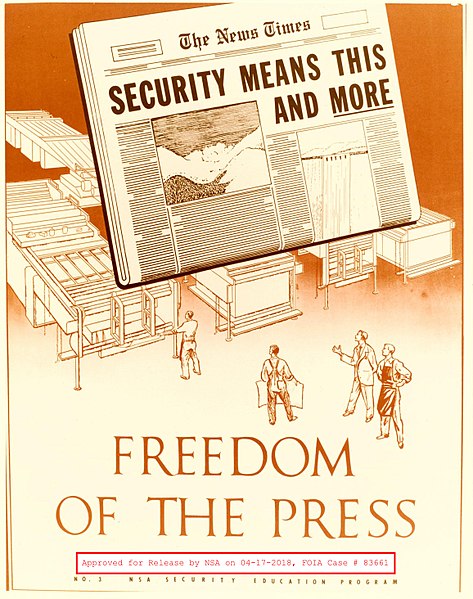This topic explores the news and the role of the Press and press freedom in 21st century United States democracy.
 National Security Agency (NSA) security/motivational poster from the 1950s or 1960s | Public Domain
National Security Agency (NSA) security/motivational poster from the 1950s or 1960s | Public Domain
The News is everything of importance that happens when we are not physically present to see it for ourselves. The Press is a broad term, referring to the people (reporters, photographers, commentators, editorial writers and behind-the-scenes workers in media organizations) that bring us the news. It is known as the Fourth Estate, or the Fourth Branch of government in our democracy, because it reports openly and fairly on what is happening in the community, the nation, and the world.
Some researchers are now referring to social media as the Fifth Estate (Educators Meet the Fifth Estate: Social Media in Education, Elementary School Journal Special Issue, 2021).
Freedom of the Press is essential to the existence of democratic government. Journalists must be able to report the news openly and honestly and people must be able to access truthful information from online sources, social media, and print materials.
The media literacy activities in this section explore press freedom in the United States, objectivity in news reporting, the roles of reporters and investigative journalists, and how news-related photographs convey messages and meaning to viewers. These activities feature low-tech and high-tech analysis of the media, including exploring how recommendation algorithms function, detecting fake news, conducting critical visual analyses, and evaluating memes and TikToks as political cartoons.
Media Literacy Activities Choice Board

Freedom of the Press & News/Media Literacy Choice Board (view)
(make your own copy of this choice board to remix/share/use)
Media Literacy Activities